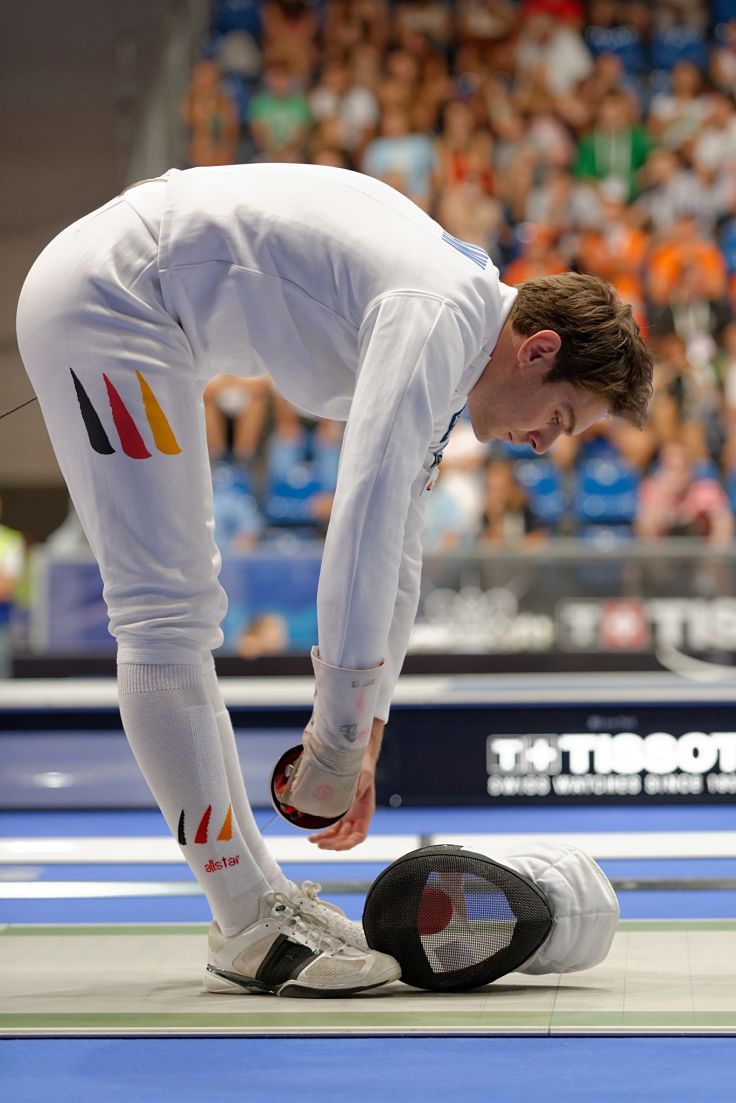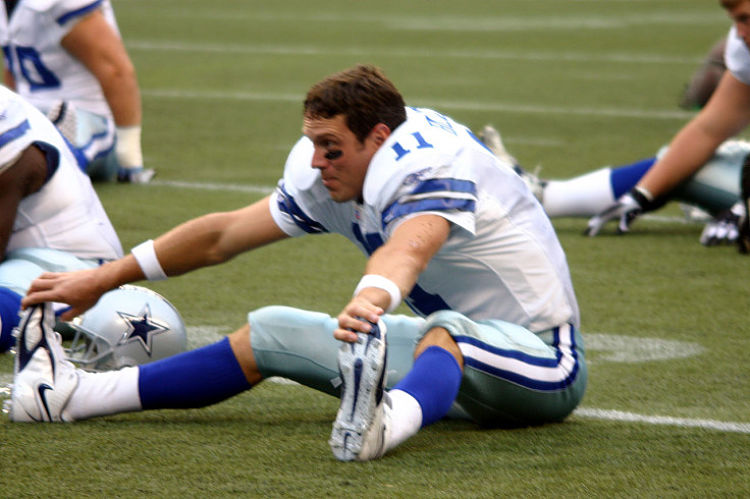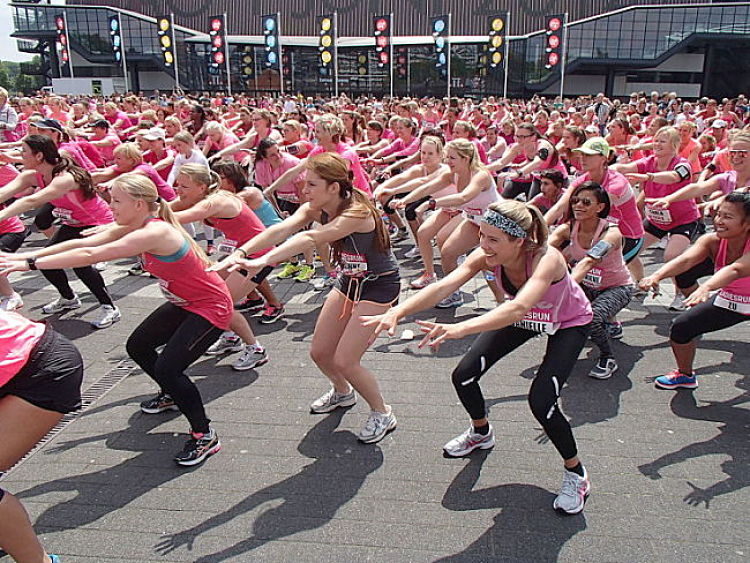How Do You Stay Injury Free When Running, Training for Events
Knowing how to stay injury free when training or competing in an event, even a fun run is a as crucial part of planing to run faster. An injury can set you back weeks or longer and mean you have to in some cases start again from scratch. There are obviously many reasons why runners get injured.
Research has shown that about 80% of injuries most injuries can be linked to about 10 common causes where people have broken the fundamental training tips and guides. As the old adage puts it - the cause of injuries is not running, but running badly. This article outlines a set of rules and guiding principles to will help keep you injury free.
Warming Up and Cooling Down
You should always take time to thoroughly cool down after a session and warm up before you train or compete. There is lots of research that shows that warming up is vital for avoiding ligament and muscle damage and cooling down is also important to relieve strain and relax your muscles.
Runners should stretch a little and starting moving slowly, gradually building up to short sessions of peak intensity, then slowing down gradually at the end of each warm up period. After a session or event, jog slowly and walk for a few minutes. Then stretch to relax the muscles as your cool down. But don't overdo it as recent research has shown that stretching many be less important than warming up and cooling down.
Listen to your Body
Don't be tricked by the 'No Pain No Gain' concept that you won't make any gain unless its painful. However you have to learn to distinguish between different types of pain and to listen to what your body is telling you.
The beneficial pain is produced when you train hard to your limits and finish a workout session with tired aching muscles and burning lungs. You are tired but have done minimal damage.
The bad type of pain is what you feel in your muscles, joints, tendons or ligaments. This pain lingers on and does not end a few minutes after your workout. This is a sign that you have done real damage. One approach to this is to apply the RICE formula:
- R (Rest) Stop and rest whatever is causing pain
- I (Ice) Quickly cover the injury with ice for 15 to 20 minutes
- C (Compression) After icing, use an elastic bandage to reduce swelling in the injured area
- E (Elevation) Elevate the injured part of the body to reduce swelling
Use the RICE procedure immediately you feel pain of strain that is beyond simple tiredness. It has been estimated that for every minute's delay with icing an injury the overall recovery is delayed by an by an hour. You only have to watch football games to see how quickly ice is applied to an injury. You should continue with the RICE treatment several times a day for about 3-4 days.
Of course, if pain continues for more than a few days, consult a doctor.
Take Time to Rest Properly
Recent research has shown that up to 95% of marathon competitors had over trained before a marathon. It is very hard to judge this and many elite athletes have the advantage of scientists who can monitor their wind-down efforts so that they are fresh for the event.
When you exercise, you need to allow your body adequate time to recover, after all the training is to induce muscle strength and aerobic capacity and these things take time to develop. If you schedule hard workouts too soon after each other, you will not make progress, and you will be prone to injuries. It has been estimated that muscles need about 48 hours to recover and rebuild between workout sessions.
So after a hard run or interval training sessions, the next day should be either an easy paced recovery run, a day off, or an alternative workout (such as swimming, gym work, bike riding or walking). You also need to take regular days off, once or twice a week. Also you need to ensure you get adequate sleep.
Ensure you Have Good Nutrition
Hard training places huge extra demands on your body, including extra nutrients for recovery and building extra muscles and strength. In order to increase your fitness and keep free of injuries you need a healthy diet based around lots of fresh vegetables and fruit, good quality/low fat protein (chicken, lean meat, fish, beans), and whole grain carbohydrate in the form of rice, bread and pasta. Be sure to also keep well hydrated by drinking lots of plain water and other fluids.
The 10 Percent Rule
One common cause of injuries is people increasing their training distances too quickly. It is very easy to do especially when you step up after several good sessions that felt easy to do. But many people step up too quickly, are far too ambitious and the extra demands they put on their bodies leads to an injury.
Consequently many coaches advise that you should confine your increase in distance and speed in interval of 10 percent. That is an extra mile for every 10 miles you are doing now or a 10% reduction in time for a set distance. This does not mean you will not make progress. For example, if you add 10% to your training distance each week, you can double your total distance in 10 weeks and triple it in 14 weeks.
Should You Stretch? If so When?
Most runners go through elaborate stretching routin when they arrive at the training track or before and event, usually as the first thing that they do. However, research has shown that this is the worst possible time to stretch when you muscles are cold. Many people get injured stretching.
The best time to stretch is actually immediately after a workout, when the muscles are warm and can benefit from being stretched to avoid cramp and muscle tightness. This type of stretching will improve flexibility, avoid cramps, improve speed recovery, and generally reduce the risk of injury.
Is Cross-training Worthwhile?
Many runners discount it as a distraction, but research has shown that cross training helps reduce injuries and can actually provide real benefits for training helping you to run faster. The advantage for running training is that you can use it to boost you aerobic capacity, while giving other muscles in a the body a workout.
This helps to build endurance while allowing your leg muscles to relax. Even cycling tends to exercise a different set of muscles that those used when running. It also means less pounding on your joints allowing them to recover.
How to You Prevent Shin Splints
The term 'shin splints' refers to a nagging pain felt along the front of the shinbone anywhere between the ankle and knee to ankle. People who have jut starting running have a much greater risk of developing shin splints. After a while your tendons, muscles and bones become adapted to the stresses and strains of running. Athlete who rapidly increase their training intensity are also prone to developing shin splints. The precise cause unknown and it may be related to inflammation of the tendon or a stress reaction from the bones themselves. Avoidance is the key because once the injury occurs it may take several days or longer for the symptoms to disappear. Treatment involves rest, the regular ice-packs treatments and on anti-inflammatory medications.
Causes of Shin Splints
- Exercising too hard, especially by increasing work rates too quickly causing strained muscles, stretched tendons, and possibly minor damage to the bones and joints
- Flat feet and wearing the wrong type of shoe that does not have enough padding or support can strain the shin tendons and cause tearing or inflammation.
- Poor running form and gait, such as pronation, which is rolling the feet inwards when running, and other forms can cause strained tendons and muscles.
How to Prevent Shin Splints
- Don't increase your distance or speed by more than 10% per cent a week, even if you feel capable of taking on the extra work load.
- Beginners should start very slowly and run every second or third day to allow adequate time for rest and recovery. Listen to your body and recognise that your body will take time to change the muscles and cope with the pounding on the joints.
- Always warm up before exercising and warm-down afterwards. Include some slow and sustained stretches during the cool down period.
- Start by running on soft surfaces such as the beach, running tracks or grassy tracks.
- Install shock-absorbing inner soles in your running shoes and use proper well designed running shoes that are comfortable and offer good padding and shock absoprtion.
- Use cross-training to break your running routines as this builds aerobic capacity while resting your muscles and tendons.
How to Prevent and Fix Blisters
Blister can be very debilitating and can take a long time to heal. Prevention is the best strategy.
How to Prevent Blisters
- Never wear new shoes for a race without wearing them in and letting your feet get used to them. Only wear new shoes for part of a training session until you get used to them, especially if you feel them developing.
- Make sure your running shoes are fitted by a professional at a running shop. Otherwise you may have ongoing problems.
- Try wearing two pairs of socks or woolen socks so that your foot can move without rubbing. Wool provides a cushioned surface that gives and allows you foot to slide a little rather than rubbing against the skin.
- It may sound weird but spraying antiperspirant on your feet has been shown to prevent blisters.
How to Avoid Tendon Problems
The Achilles tendon that stretches from the lower calf muscle to the back of the heel is one of the most common and debilitating injuries that occur in runners and team spots. These injuries can take a very long time to heal because tendons are renowned to be slow-healers. Research shows it is best not to completely rest it but to keep exercising it gently by doing gentle calf raising exercises.
How to Prevent and Treat Chafing
When runners progress to longer distances, chafing can cause severe set backs. You cab get chaffing almost anywhere particularly when clothing gets wet. To prevent it during a race or a long run session, don't wear anything new, particularly anything with raised seams or fillers than makes clothing stiff before it is washed. Apply lots of Vaseline to nipples, underarms and inner thigh before all training sessions.



